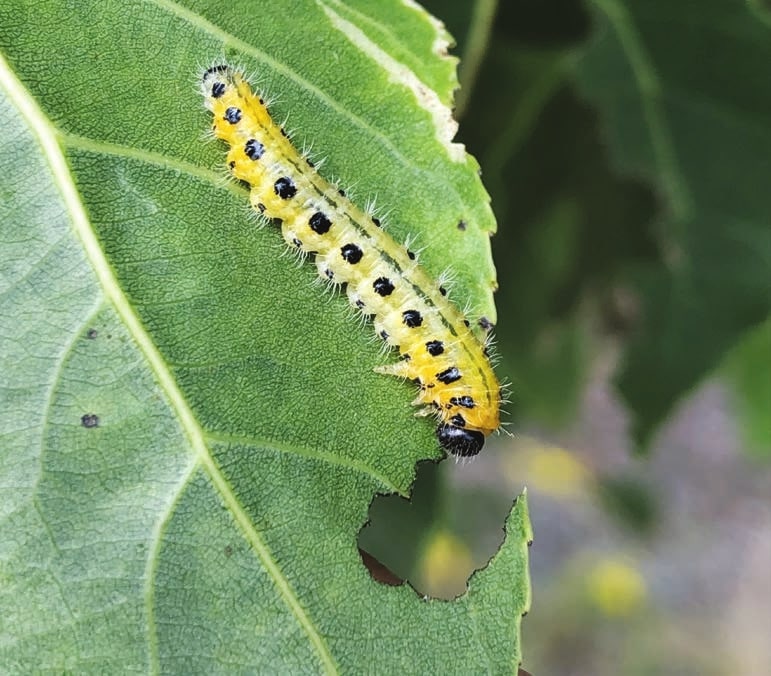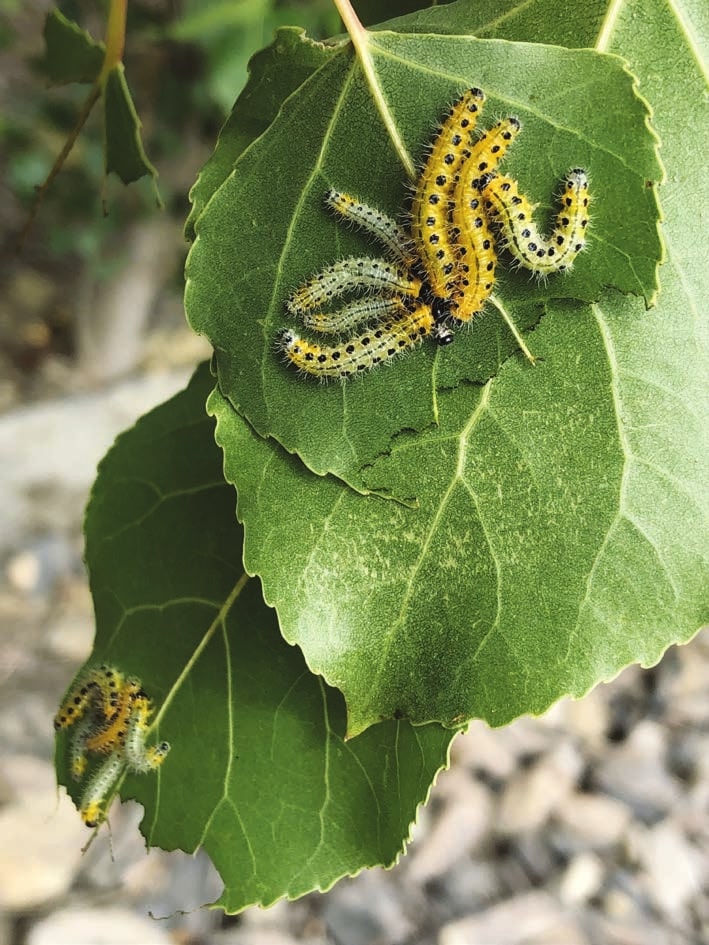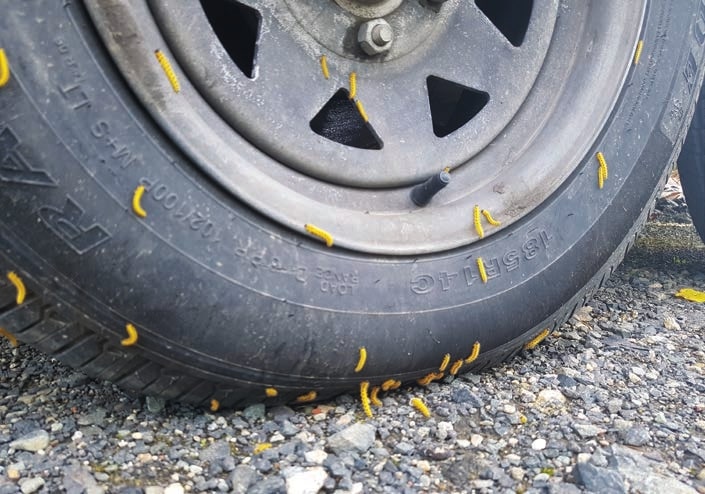PESTS AND DISEASES OF FORESTRY IN NEW ZEALAND
What is yellow and hairy and eats poplar leaves?
Toni Withers, New Zealand Tree Grower Magazine November 2021.
A new threat to poplars has arrived. The hairy poplar sawfly was first spotted in Dunedin in 2019 after one larva accidentally found itself caught on the sticky base of a gypsy moth surveillance trap. This pest is a sawfly called Cladius grandis.
Very similar to the willow sawfly, this unusual looking creature resembles a caterpillar but is in fact a type of wasp which eats leaves. Up until now, the only disorder turning New Zealand poplar leaves yellow was poplar rust, a pathogen which would cause premature leaf shedding from normally statuesque and healthy poplar trees. There is concern that this new yellow chewing menace could cause unwelcome effects on poplars, valued trees which play an important role in our landscape. Currently, the known distribution of the pest is on the Taieri Plains from Waihola in the south, to north of Dunedin near Waikouaiti.
Where the hairy poplar sawfly is from
The hairy poplar sawfly is native to the northern hemisphere, where it evolved on Eurasian poplars. In Europe, poplars and willows are attacked by a complex of pests, including many species of sawflies. Cladius grandis was first recorded as an invasive pest in the United States after being found in New York in 1887 and spreading to the west coast of Canada, British Columbia, by 1917.
It is generally regarded as a minor pest of poplars in North America, but it can reach outbreak proportions in localised areas and can cause severe defoliation in some years. Historical outbreaks in the 1920s involved large numbers of dispersing larvae crawling up walls and into houses. Despite being hairy there is no evidence that the hairs on the larvae pose any kind of health risk to humans.
The hairy poplar sawfly shows a particular liking for the poplars Populus nigra, P. deltoides, P. tremula, P. tremuloides and P. canadensis. The latter is a natural hybrid of P. nigra and P. deltoides. As all these species are parents of New Zealand’s own poplar cultivars, we expect most poplars to be susceptible to feeding by the pest. Research is under way at Plant & Food Research to examine the potential for resistance in the poplars which are commonly used for soil conservation and provide useful timber.

When the sawfly is active
The adults are about the size of a honey bee, with an orange abdomen and a black head and thorax. Emerging from the soil in October and November to mate, the females are present throughout the summer. They lay their eggs in a neat row down both sides of the petiole, the leaf stalk, of a fully expanded leaf.
Each egg is placed into a little pocket, formed by the action of the saw-like ovipositor. The eggs then take four weeks to hatch, and the tiny pale larvae are first seen in early December. They generally feed side by side, skeletonising the surface of the leaves to leave translucent ‘window’ appearance. As the larvae feed and develop through their six instars, any time between December and March, they grow in size and become a brighter yellow with distinctive black dots. When they reach their fourth instar the larvae are big enough to chew through the entire leaf, as seen in the photographs.
Larvae reach maturity after approximately a month of feeding and then disperse to pupate. Observed pupation sites include bark fissures of a tree, the soil or in leaf litter. In a quirk of nature, they show a strong attraction to spinning their cocoons within the grooves of rubber tyres. In Dunedin only one complete lifecycle a year has been observed. In Quebec, in one scorching year the poplar sawfly completed two generations in one summer. Poplar sawfly may become a more serious pest when it reaches areas of New Zealand with warmer summer temperatures, regions such as central Otago or the east coast of the North Island.



Is it a serious pest?
The hairy poplar sawfly is currently only a minor pest, removing up to a fifth of the leaf area from the lower branches of young poplars. New Zealand has no known natural enemies of this poplar sawfly because we have no closely related native species. In addition, birds find them unpalatable. Therefore, we cannot rule out the possibility of its pest status worsening in the future.
If you find one
We need the eyes of farm foresters throughout the country to look for these pests this summer, to let us know where they have spread to. Please report any suspected findings by uploading a photograph to //inaturalist.nz/home or via the Find-A-Pest app.
The research was funded by the Ministry for Primary Industry’s Sustainable Food and Fibre Futures fund, the NZ Poplar and Willow Research Trust and the Combined Regional Councils Land Managers.
Toni Withers is an entomologist at Scion.



